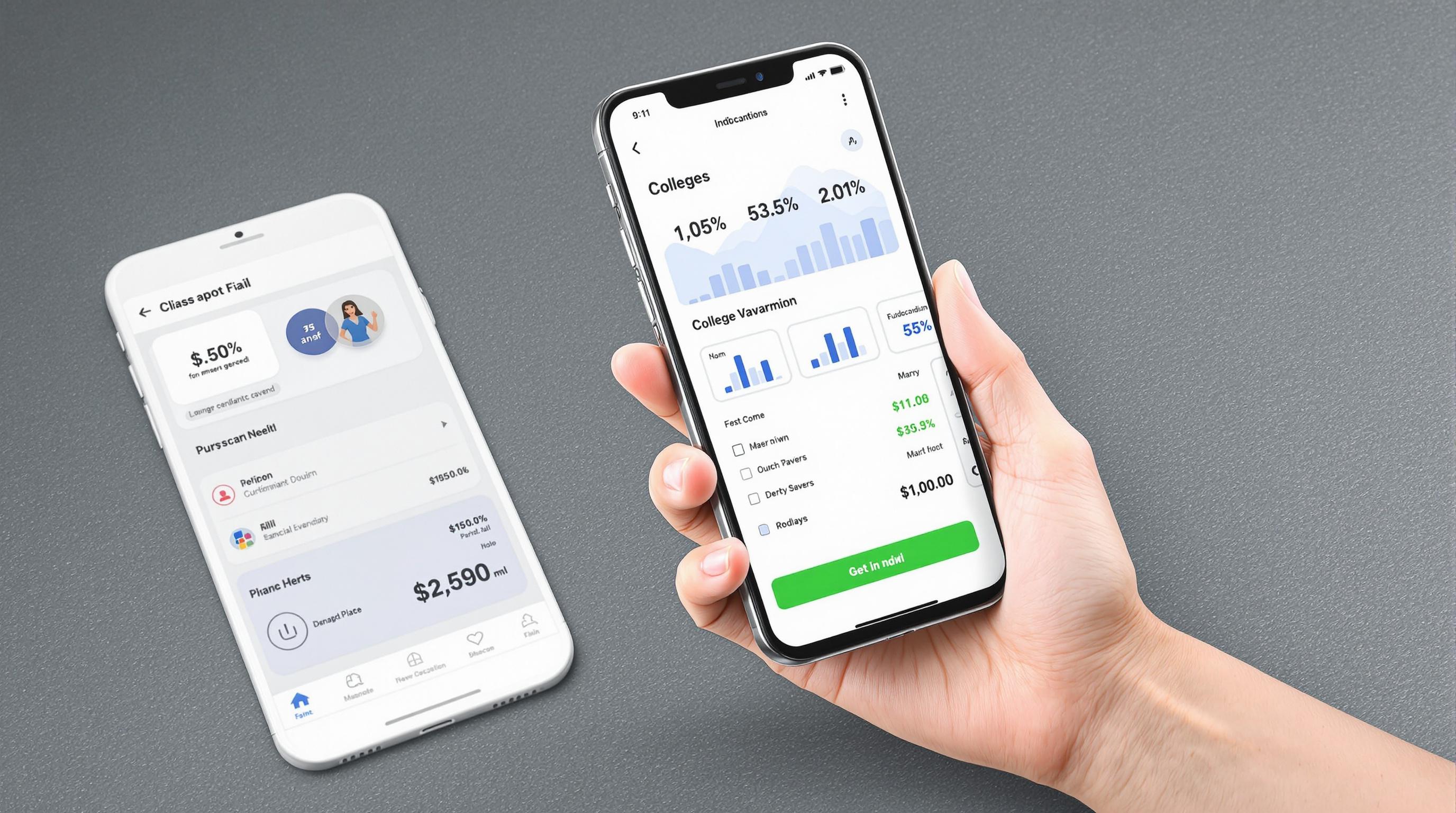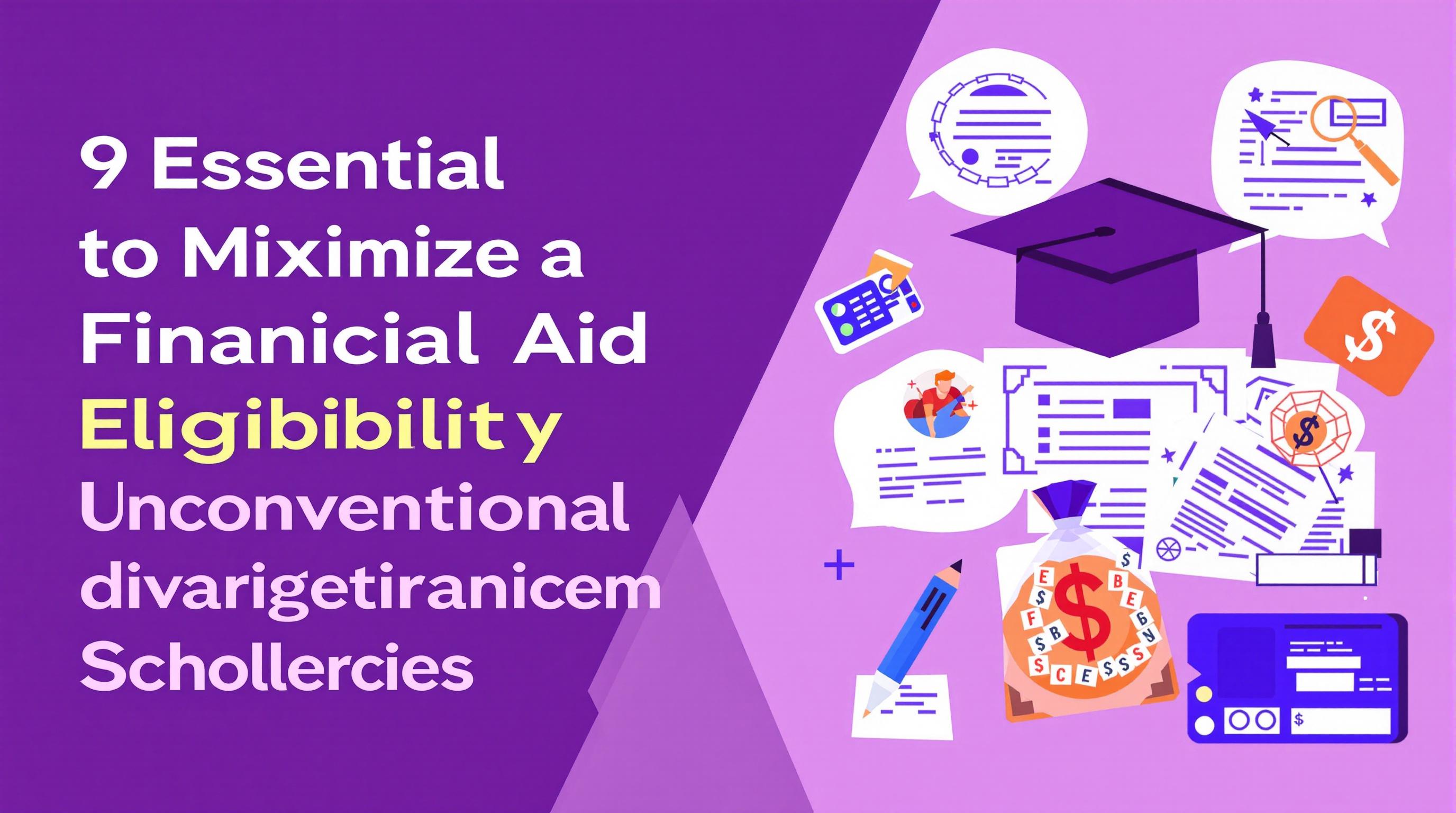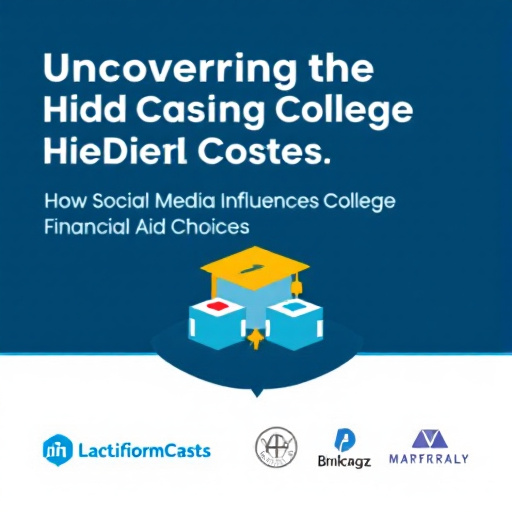Featured Articles
- 9 Essential Strategies to Maximize College Financial Aid Eligibility Through Unconventional Scholarship Sources
- From Grants to Gigs: How the Gig Economy is Shaping Modern College Financial Aid Options
- Redefining Financial Aid: How Social Media Influence Shapes College Funding Choices for Gen Z Students
- The Hidden Costs of College: How Unseen Expenses Derail Financial Aid Plans
- Top 6 Innovative College Savings Apps Released Since 2019 That Actually Boost Your Financial Aid Chances
Unlocking the Mysteries: How Social Media Influences College Financial Aid Decisions
Unlocking the Mysteries: How Social Media Influences College Financial Aid Decisions
Social media is transforming the landscape of college financial aid decisions, with its influence reaching far beyond casual interactions. Understanding this phenomenon involves analyzing its impact on perceptions, recruitment, and even students’ eligibility for financial support.
The Social Media Revolution in Higher Education
Once upon a time, college financial aid was a realm disconnected from the digital world. Although college admissions have long considered various factors such as academic performance and personal essays, social media is fast becoming a new frontier.
A New Age of Recruitment
In the past decade, social media platforms like Instagram, TikTok, and Twitter have changed the way institutions recruit students. According to a survey from the National Association for College Admission Counseling, over 81% of universities utilize social media as a part of their recruitment strategy. Colleges often create engaging content that displays their campus culture and available financial aid options.
For example, a state university might showcase personal stories from diverse students who successfully navigated financial aid processes. These narratives can resonate with prospective students and inspire them to apply, potentially increasing enrollment rates. The emphasis on emotional engagement through social media can lead students to feel more connected and supported, paving the way for more significant financial aid applications.
Influencers as Informants
Students increasingly turn to influencers for guidance on financial aid, especially those navigating the treacherous waters of student loans and scholarships. A recent study revealed that about 64% of teens trust influencers' opinions over traditional advertising—a statistic that highlights the shifting dynamics in the information landscape.
Imagine a TikTok influencer sharing a digestible video on how they secured a substantial scholarship. This format can turn complex financial aid topics into understandable bites, making it more accessible for the average student. Moreover, such influencers often share their personal experiences, which can create an impression of authenticity. Colleges may even collaborate with popular figures to reach a younger audience, making financial aid information more appealing.
Perceptions Matter
The way colleges perceive students can dramatically influence their financial aid decisions. If potential applicants portray their lives positively on platforms like Instagram, they can increase their chances of receiving more scholarships. With institutions looking for well-rounded students, showcasing involvement in clubs, part-time work, or community service can enhance an applicant's profile.
However, this can also lead to a perilous game of authenticity vs. expectations. For instance, a student might feel pressured to curate their social media presence to draw the attention of financial aid boards. This phenomenon can contribute to mental health issues or a skewed sense of self-worth based on likes, shares, and follows. The pressure to perform online can be overwhelming, particularly for high school seniors who are already wrestling with the weight of college applications.
Case Studies: The Power of the Online Narrative
Consider Jennifer, an ambitious high school senior from California who shared her journey to college on Instagram. Over the course of a year, she posted about her volunteer work and the struggles of her single-parent household. By highlighting her hard work and determination, her social media presence caught the attention of a college looking to boost its diversity through financial aid scholarships. Ultimately, she received a full scholarship that transformed her life.
Unpacking the Impact of Online Reputation
Institutional bias based on students’ online behavior is a concerning trend. A substantial percentage of college admissions officers admit to using social media to evaluate applicants. In 2021, 35% of admissions officials reported that they viewed candidates' profiles to ascertain their character and values. In some cases, this could positively or negatively affect a student’s eligibility for certain financial aid opportunities.
This new reality raises the question: How fair is it for institutions to judge students based on their social media footprints? Is it ethical for colleges to weigh what a student presents online as a factor in financial aid decisions? The line between personal expression and eligibility criteria seems blurrier than ever.
Challenges Everybody Faces
While the benefits of social media influence are considerable, the challenges are equally daunting. Financial aid offices can sometimes face backlash when their decisions are perceived as biased or influenced by an applicant's online persona. For instance, an applicant can be unfairly judged if they do not fit the typical mold portrayed in media, failing to receive the assistance they need.
Moreover, misinformation is rampant. As many students turn to social media for advice on financial aid, a number of myths and misconceptions circulate. For example, there’s a persistent myth that only perfect GPAs qualify for significant scholarships, neglecting many opportunities based on individual circumstances or unique talents.
Statistics Speak Volumes
According to a 2022 survey by the College Board, nearly 70% of students say they underestimated the availability of financial aid options. This gap often stems from misleading information spread across social media. A better understanding of the financial aid landscape must be disseminated, particularly among marginalized groups who may feel alienated by often-competitive online environments.
Changing the Narrative: Student Engagement
Students themselves can be catalysts for change regarding how financial aid is communicated. Peer-led initiatives can encourage others to share accurate information about financial aid opportunities on social media platforms. Creating a supportive community online helps break down the barriers set by misinformation. Student advocacy can lead to increased transparency about financial aid availability and processes.
Conversations through Content
Humor and light-hearted content can also play a role in demystifying the financial aid process. Just as memes have taken over digital conversations, relatable content about financial struggles can break the ice and foster important discussions. Why not have an influencer talk candidly about the sheer terror of FAFSA applications with an exaggerated but humorous flair? It could capture attention while also normalizing the conversation around difficulties in seeking aid.
Stories of Resilience
Consider Amir, a student from a low-income background who used social media platforms to share his scholarship journey, frustrating rejections, and eventual triumph. His compelling story motivated countless peers and encouraged them to apply. With this visibility comes power—showcasing resilience can influence not just the mindsets of similar students, but institutions searching for applicants who think outside traditional success metrics.
The Societal Implications
As college communities evolve into more social and interconnected environments, the implications of social media on financial aid are profound. The influence of online narratives on youth culture suggests that financial aid offices need to be more aware of current trends and how they may impact applicant decisions.
Moreover, colleges may need to reevaluate criteria used in assessing financial aid applications, incorporating a broader understanding of applicants' circumstances rather than relying solely on an online persona. It is imperative to address biases arising from social media while promoting fair assessment practices that value the unique challenges faced by diverse students.
Future Directions for Financial Aid
Looking ahead, as social media continues to evolve, financial aid offices should anticipate changes in how students engage online. This could lead to more personalized communication strategies that resonate on platforms like TikTok and Snapchat. For example, incorporating live Q&A sessions or informative webinars on Instagram could alleviate confusion around financial aid enrollment processes.
Additionally, institutions must consider implementing data literacy programs for students, which could empower them to navigate financial aid options effectively. By equipping students with knowledge about social media’s role and missteps in the financial aid landscape, colleges can create a more inclusive atmosphere, eliminating biases and fostering trust.
Conclusion: Bridging the Gap between Digital Impression and Authenticity
As we stand at the crossroads of social media influence and the traditional world of financial aid, it is essential to embrace the changes while also addressing the challenges they bring. Institutions must recognize the importance of authenticity in applicants' narratives, ensuring decisions reflect the real experiences of diverse student populations. On the other hand, students should be educated about effectively using social media to present their stories in a manner that complements their financial aid status rather than dictating it.
The future promises possibilities—if only we can forge a path that values genuine stories over curated online identities, we may unlock a new era in college financial aid where every student has an equal opportunity to thrive.




